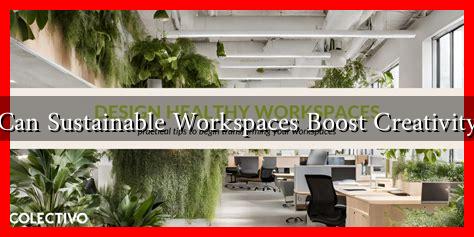-
Table of Contents
Can Sustainable Workspaces Boost Creativity?
In recent years, the concept of sustainable workspaces has gained significant traction as organizations strive to reduce their environmental impact while enhancing employee well-being. But beyond the ecological benefits, can these sustainable environments also foster creativity? This article explores the relationship between sustainable workspaces and creativity, backed by research, case studies, and expert opinions.
The Link Between Environment and Creativity
Research has consistently shown that the physical environment can significantly influence creativity. A study published in the journal *Environment and Behavior* found that individuals working in environments with natural elements, such as plants and natural light, reported higher levels of creativity and productivity. This connection can be attributed to several factors:
- Natural Light: Exposure to natural light has been linked to improved mood and energy levels, which can enhance creative thinking.
- Biophilic Design: Incorporating natural elements into workspace design can reduce stress and increase cognitive function, leading to more innovative ideas.
- Flexible Spaces: Sustainable workspaces often feature flexible layouts that encourage collaboration and brainstorming, essential components of the creative process.
Case Studies: Companies Leading the Way
Several companies have embraced sustainable workspaces and witnessed a boost in creativity and employee satisfaction. Here are a few notable examples:
- Google: Known for its innovative work culture, Google has integrated sustainable practices into its offices. Their use of open spaces, natural light, and green roofs not only reduces their carbon footprint but also fosters collaboration and creativity among employees.
- Interface: This flooring company has committed to sustainability by using recycled materials and reducing waste. Their headquarters features a biophilic design that includes living walls and natural light, resulting in a workspace that inspires creativity and innovation.
- Patagonia: The outdoor clothing brand has designed its offices to reflect its commitment to environmental sustainability. Their workspaces are filled with natural materials and promote a culture of creativity and environmental responsibility.
Statistics Supporting the Case
Several studies highlight the positive impact of sustainable workspaces on creativity:
- A survey by the World Green Building Council found that 85% of employees in green buildings reported higher levels of well-being, which is closely linked to enhanced creativity.
- According to a study by the University of Exeter, employees in green-certified buildings were 15% more productive than those in conventional offices.
- Research from Harvard University indicated that employees working in environments with better air quality and natural light had a 20% increase in cognitive function, directly correlating to improved creative output.
Challenges and Considerations
While the benefits of sustainable workspaces are clear, there are challenges to consider:
- Initial Costs: Implementing sustainable practices can require significant upfront investment, which may deter some organizations.
- Employee Buy-In: For sustainable workspaces to be effective, employees must be engaged and committed to the principles of sustainability.
- Balancing Aesthetics and Functionality: Designing a workspace that is both sustainable and conducive to creativity requires careful planning and consideration.
Conclusion: The Future of Workspaces
As organizations continue to prioritize sustainability, the evidence suggests that sustainable workspaces can indeed boost creativity. By fostering environments that incorporate natural elements, promote collaboration, and enhance employee well-being, companies can unlock the creative potential of their workforce. The examples of Google, Interface, and Patagonia illustrate that investing in sustainable workspaces is not just an ethical choice but a strategic one that can lead to innovation and success.
In summary, the relationship between sustainable workspaces and creativity is supported by research, case studies, and statistics. As we move towards a more sustainable future, organizations that embrace these principles will likely find themselves at the forefront of creativity and innovation.
For more insights on sustainable workspaces, visit the World Green Building Council.

